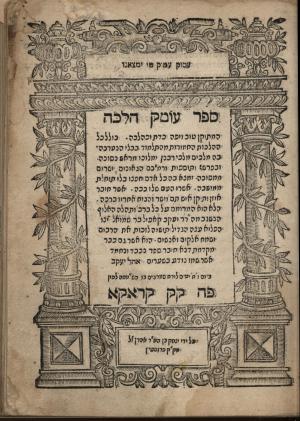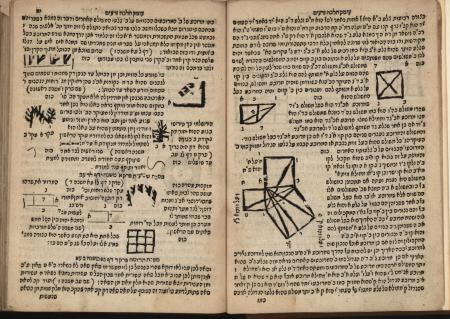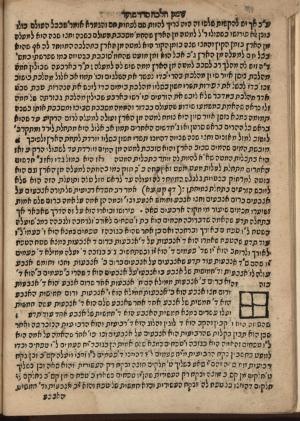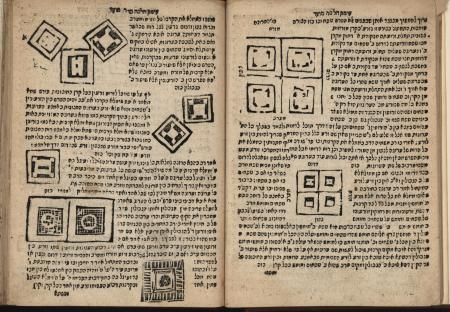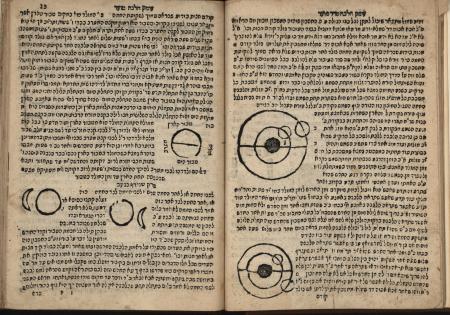Obj. ID: 36234
Jewish printed books Omek Halachah by Ya'akov ben Shmuel Bunim Koppelman, Cracow (Kraków), 1593

This text was prepared by William Gross:
This is the first edition of this book that contains elucidations on the laws pertaining to Kilayim, Eruvin, along with Talmudic references to mathematics, botany, engineering, etc. Includes numerous woodcut illustrations and mathematical and astronomical charts, diagrams and symbols. This book was considered rare for many centuries and probably the only book with diagrams print in Poland in the 16th century. The diagrams were a tool for understanding various passages in the Talmud and in other works .the auther R' Yaakov Koppelman of Brisk received approbations from the great 16th century scholars notably the Maharsha, Rabbi Mordechai Yaffe, and Rabbi Meshulam Feibush, Av Beit Din of Cracow.
Decorative architecural title page.
R. Jacob b. Samuel Bunim Koppelman (1555-1594) was a Talmudic scholar distinguished for his broad erudition and interest in secular sciences. R. Koppelman was born in Freiburg-im-Breisgau and studied under Mordecai Jaffe. Early in his life he embarked upon mathematical and astronomical studies, in addition to intensive occupation with traditional Jewish learning. In this work he elucidates the laws relating to geography and establishes the various weights and measures in the Talmud. He also draws the site of the Temple, the candelabrum, and the table of showbread, revealing considerable knowledge in all these fields. He was 28 years old when he completed this work.
The printer Isaac Prostitz, born in Prossnitz, Moravia, was sent at an early age to Italy by his father to learn the printing trade, accomplished at the Cavalli and Gryphios presses. When the latter press closed in 1568, Prostitz acquired their typographical equipment, including the letters, ornaments, and frames, and brought them to Cracow, where he was joined by the famous proofreader R. Samuel Boehm. Prostitz petitioned King Sigismund II Augustus on 15 October 1567 for the privilege of establishing a Hebrew press, which was granted to him and "his seed after him" to print the Talmud and other Hebrew books for a period of fifty years. Prostitz would, until his death in 1611, print more than 200 titles. The press was continued by his sons, Aaron and Issachar, after his death, and their sons after them.


